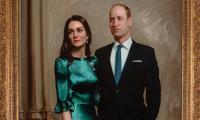LAHORE: Despite stiff opposition from various religious and social quarters, Pakistani women again marched on the roads for female equality Sunday to commemorate the “International Women’s Day,” chanting “Mera Jism, Meri Marzi” slogans, which can roughly be translated as “My body, my choice”.
By the way, the “My body, my choice” slogan has been a far cry of women in the United States, India, Australia and developed European countries especially, and it chiefly aims to break the silence and end the stigma around a critical sexual and reproductive health issue, which is free access to safe abortion.
Research conducted by the “Jang Group and Geo Television Network” on this thorny subject shows that despite being victims of systemic gender subordination, uneven socioeconomic development and the impact of tribal, feudal, and capitalist social formations on their lives, innumerable Pakistani women have enjoyed voting rights since the country’s inception in 1947, without having to fight for them!
On the contrary, many countries claiming to be the champions of democracy, gender equality and human rights took ages to grant the right of suffrage to their women.
For example, despite the fact that the United States had declared independence on July 4, 1776, the American women had won the right to vote in 1919 after a lengthy and difficult struggle. Although the US Constitution had come into force in 1789, the framers of this charter and the America’s founding fathers did not help their women achieve this milestone. The victory of American women took decades of agitation and protests, and finally on June 4, 1919, a law in this context was passed by the US Congress and ratified on August 18, 1920.
By the way, the United States has had 45 Presidents since George Washington in 1789, but all these heads of states have been males.
And as far as Pakistan is concerned, it has given many opportunities to brilliant women since its birth.
Had Pakistan’s military ruler, Gen Ayub Khan, organized and held the 1965 Presidential election fairly, Quaid-e-Azam’s younger sister and dental surgeon, Fatima Jinnah, would have become the first female President of the Muslim world over 55 years ago.
In 1947, Fatima Jinnah had formed the Women's Relief Committee, which later served as the nucleus for the All Pakistan Women Association (APWA).
Begum Shaista Ikramullah was the first woman elected member of the Constituent Assembly of Pakistan. Begum Mahmooda Salim Khan was Pakistan's first woman minister and member of President Ayub Khan’s federal cabinet.
First Pakistani Premier Liaquat Ali Khan’s wife, Ra’ana Liaquat Ali Khan (born Sheila Irene Pant) was the first Muslim woman delegate to the United Nations in 1952.
In 1954, the Government of Pakistan had appointed her as Ambassador to the Netherlands, the first-ever female envoy of Pakistan to be stationed abroad.
She was the First Lady of Pakistan from 1947 to 1951.
Benazir Bhutto was the first female prime minister of Pakistan in 1988 and the first woman elected to head a Muslim country ever. She was elected twice to the office of prime minister.
Fehmida Mirza was the first female speaker of Pakistan’s National Assembly.
Hina Rabbani Khar became the first Pakistani minister of Foreign Affairs in 2011.
It goes without saying that sailing has never been smooth for these illustrious Pakistani women, who had to swim against the tide to make a mark for themselves.
Girls in sports had to confront tough times too!
In 1996, when sisters Shaiza and Sharmeen Khan had first tried to introduce women's cricket in Pakistan, they were greeted by court cases and even death threats. The government of the time had refused to allow them to play against India in 1997, having ruled that women were forbidden from playing sports in public. However, later they were granted permission, and the Pakistani Women Cricket Team played its first recorded match on January 28, 1997 against New Zealand in Christchurch.
Sidra Sadaf is a woman cyclist who had gone on to win a silver medal at the Eleventh South Asian Games in Dhaka, in January 2010.
Naseem Hameed emerged as the fastest woman sprinter in South Asia during the 2010 South Asian games.
Talking of God-gifted talent, Arfa Abdul Karim Randhawa was a Pakistani student and computer prodigy who, in 2004 (at the age of nine), became the youngest global Microsoft Certified Professional. Her talent was acknowledged by none other than the CEO of Messrs Microsoft and world’s richest man, Bill Gates.
She thus got her name registered in the Guinness Book of World Records.
Filmmaker Sharmeen Obaid-Chinoy is known for her work in films that highlight the female inequality.
She is the recipient of two Academy Awards, six Emmy Awards and a Knight International Journalism Award.
In 2012, the Pakistani government had bestowed “Hilal-e-Imtiaz”, the second highest civilian award upon her, while the “Time” magazine had named her one of the 100 most influential people in the world.
She is the only female film director to have won two Academy Awards by the age of 37.
Samina Khayal Baig is a Pakistani high-altitude mountaineer who had climbed Mount Everest in 2013.
By 2014, she had scaled all Seven Summits.
She is also the first and youngest Muslim woman to climb Mount Everest, having done so at the age of 21.
Research further shows that in this age of ascending feminism and focus on equality and human rights, it is difficult to assimilate the Hindu practice of “Satti”, the burning to death of a widow on her husband's funeral pyre.
Although the practice is outlawed and illegal in today's India, yet it occurs up to the present day and is still regarded by some Hindus as the ultimate form of womanly devotion and sacrifice.
The term “Satti” is derived from the original name of the goddess Satti, also known as Dakshayani, who - according to Hindu Mythology - had self-immolated because she was unable to bear her father Daksha's humiliation of her (living) husband Shiva.
Research further shows that the British East India Company had recorded that the total figure of known “Satti” occurrences from 1813 to 1828 was 8,135.
(References: Charles Allen and Sharada Dwivedi’s 1998 book “Lives of the Indian Princes” and John Hawley’s 1994 book “Satti, the blessing and the curse: The burning of wives in India”)
And here follows a rather shocking June 28, 2015 report appearing in an Indian newspaper called the “Tribune India.”
The report pertains to death of the famous Sikh Empire leader, Maharaja Ranjit Singh, and the practice of “Satti”, whereby his queens and slave girls had to set themselves ablaze on his funeral pyre.
The report reads: “Maharaja Ranjit Singh died of paralysis at Lahore on June 27, 1839, and was cremated on June 28, 1839. Four of the Maharaja’s Ranis and seven of his slave girls followed the practice of sati and burnt themselves on his funeral pyre. This happened despite the fact that the Sikh Gurus had condemned and denounced the man-made notion of the inferiority of women and protested against their long subjugation.”
Talking of women's suffrage in Europe, they had sought to change voting laws to allow them to vote during the mid-19th century.
Women who owned property gained the right to vote in the Isle of Man in 1881.
In 1893, women in the then British colony of New Zealand were granted the right to vote.
The women of the British protectorate of Cook Islands had also obtained the same in 1893. In Australia, women progressively gained the right to vote between 1894 and 1911 (federally in 1902).
Canadian women won the voting rights in 1917, Britain and Germany (1918), Austria and the Netherlands (1919).
Notable exceptions in Europe were France, where women could not vote until 1944, followed by Greece (1952), and Switzerland (1971).
In Liechtenstein, women were given the right to vote in 1984, after three prior referendums held in 1968, 1971 and 1973 had failed to secure women's right to vote in this small nation.
Volunteers are busy in rescue operation due to stagnant rainwater at Sardar Colony in Peshawar on April 15, 2024. —...
Police personnel can be seen standing guard on a road in KP. — AFP/FilePESHAWAR: A police constable was injured when...
Commuters face difficulties in transportation due to stagnant rainwater in Peshawar on April 15, 2024. —...
This photo shows the flames of a lit burner of a gas stove. — AFP/FileISLAMABAD: In a major development, the sitting...
In this picture women check rice prices at a main wholesale market. — AFP/FileMULTAN: The Pakistan Business Forum ,...
Pakistan People’s Party Chairman Bilawal Bhutto Zardari gestures during an event on March 8, 2024. —...







